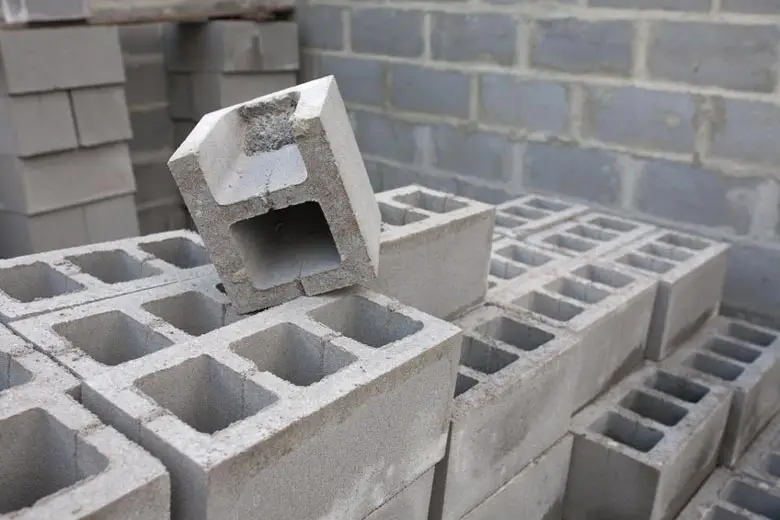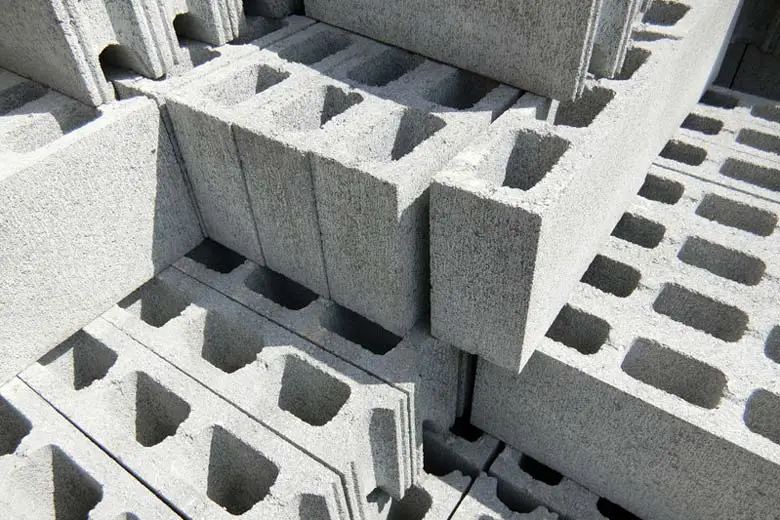Concrete has gotten a bit of a bad rap as a building material. It has not always made the prettiest buildings, and they are the first choice of prisons and parking lots. Not exactly glamorous. However, the reason for this choice is incredibly important.
Concrete bricks are fireproof and one of the safest materials you can use for a building structure. Unlike other building materials, concrete does not catch fire, can stay cool for long periods of time, and does not emit harmful chemicals when exposed to high heat.
In this article, I will go into a deep dive into how concrete bricks are able to withstand fire and high heat. Additionally, I will also compare concrete to other popular materials and demonstrate how it tops them all. As you’ll see, concrete can be made to look incredibly chic in your home!

Table of Contents
Why Concrete Bricks Are Fireproof
Concrete bricks are fireproof because of the materials they are made of. When assessing how flammable a material is, you typically want to look at a few different behaviors of the material when exposed to high heat. Some chemicals have big reactions, others small.
Flammable materials will catch fire easily and spread that heat from one area of the surface to another very quickly. Concrete bricks do not do either of these things. This is thanks to its very stable chemical makeup and its ability to keep itself from heating up.
Here are a few in-depth explanations of why concrete bricks are one of the safest and most fireproof materials available for building:
Concrete Is Made Entirely of Chemically Inert Materials
It has been a very long time since high school chemistry for me, so I can’t profess to be an expert on chemical reactions and the periodic table of elements.
However, here’s a pretty simple explanation of what it means for something to be chemically inert.
When you have a chemically inert material, such as concrete, that just means that it does not change, react, or alter much or at all under various conditions. On the flip side, more reactive chemicals will respond differently relative to the conditions being applied.
A very reactive material such as gasoline will have a very intense chemical reaction to heat because of the chemicals it is composed of.
Concrete will have little to no reaction to high heat since its chemical make-up would barely notice the temperature difference.
For the most part, concrete is made up of a combination of an aggregate material—such as sand, rocks, and gravel— mixed with cement. There is also some water and air in the mixture. All of these materials are considered chemically inert, resulting in the final product of concrete also being very stable.
If you apply a large amount of heat, the materials won’t have a chemical reaction. And since fire is actually just a chemical reaction, this means that the concrete cannot catch fire.

The Heat Transfer Rate Is Slow in Concrete
Not only does concrete have the chemical properties that allow it to not catch fire in the first place, but it is also a material that has a very slow heat transfer rate.
Here’s what this means: in the scenario where a structure made of concrete bricks was on fire (since not everything inside is going to be just as fireproof), the concrete bricks keep the spread of fire to as slow a speed as possible.
Just for illustration, if you were to take a lighter and heat up one end of a long metal rod, it would eventually get hot on the end that you are not applying heat to. This process is heat transfer, and some materials transfer heat much faster than others.
The metal rod would probably not take very long to transfer heat to the opposite end, just as with a rod made out of wood.
On the other hand, with concrete, the process would take much longer. Concrete is not 100% heatproof, so it would eventually heat up. However, it would take a lot longer than almost all other building materials available.
Think of the rule of checking the temperature of the doorknob when you suspect fire on the other side of the door. The reason the doorknob will be warm on your side is that metal has a higher rate of heat transfer.
When concrete bricks are in the walls and foundation of a building, this means that a fire would take longer to get out of control.
The more time you have in a house fire situation, the more likely everyone gets out unharmed, and the fire department will be able to save more of your belongings.
Where You Should Use Concrete in Your Building Plans
When you think of a concrete building, it conjures up images of prisons, car parkades, and oppressive structures. However, concrete has come a long way as a building material.
Not only does it have the safety benefits of being fireproof, but it can be made to be quite beautiful. It has started to become much more appreciated as an aesthetic choice.
While materials like wood are still very popular, the National Association of Home Builders has recently released some statistics revealing that one-sixth of homes being built are made of concrete instead. It’s the hottest new thing—well, actually it is the least hot, which is great!
Since you need not worry about your concrete brick home feeling prison-like or industrial, let’s take a look at some of the best places to implement concrete in your next building plans.
Areas Where Concrete Is the Best Choice
Without any doubt, your next home should have concrete walls and framing. Let me demonstrate why this is hands-down the right choice.
The average building code for fire resistance states that homes need to be able to withstand at least 15 minutes of exposure to a fire.
Wood can withstand approximately an hour of fire exposure.
Concrete walls can keep their cool for four whole hours of exposure to flames.
In addition to the walls and framing, another great place to incorporate concrete into your home is the floors. Concrete can be made to look like paneling, tile, and even marble flooring, meaning there is no compromise on style.
If you think that concrete floor will be too cold on your feet, I have two words for you: heated floors. You won’t ever need to worry about your floor catching fire through your heating system, and your toes will stay nice and warm. I installed a heated floor in my home, and I could never go back.
Additional Benefits to Building With Concrete Bricks
There are a few other great reasons to use concrete bricks, outside of being very cool and fireproof. Here are just a few of them:
- Concrete bricks are incredibly durable. Homes made with concrete avoid problems from moisture, molds, and general deterioration associated with wood.
- The sound absorption has also been rated as excellent. In comparison, wood is only rated between good and average.
- They’re resistant to hurricane and tornado damage.
Final Thoughts
Now that you know that concrete bricks are the king of all building materials, be sure to include them in all of your future building plans.
You will have peace of mind that you have built a home that is safe and stable.
Concrete can’t be beaten in versatility, durability, or safety— and now you can have all of these things concretely in style!



